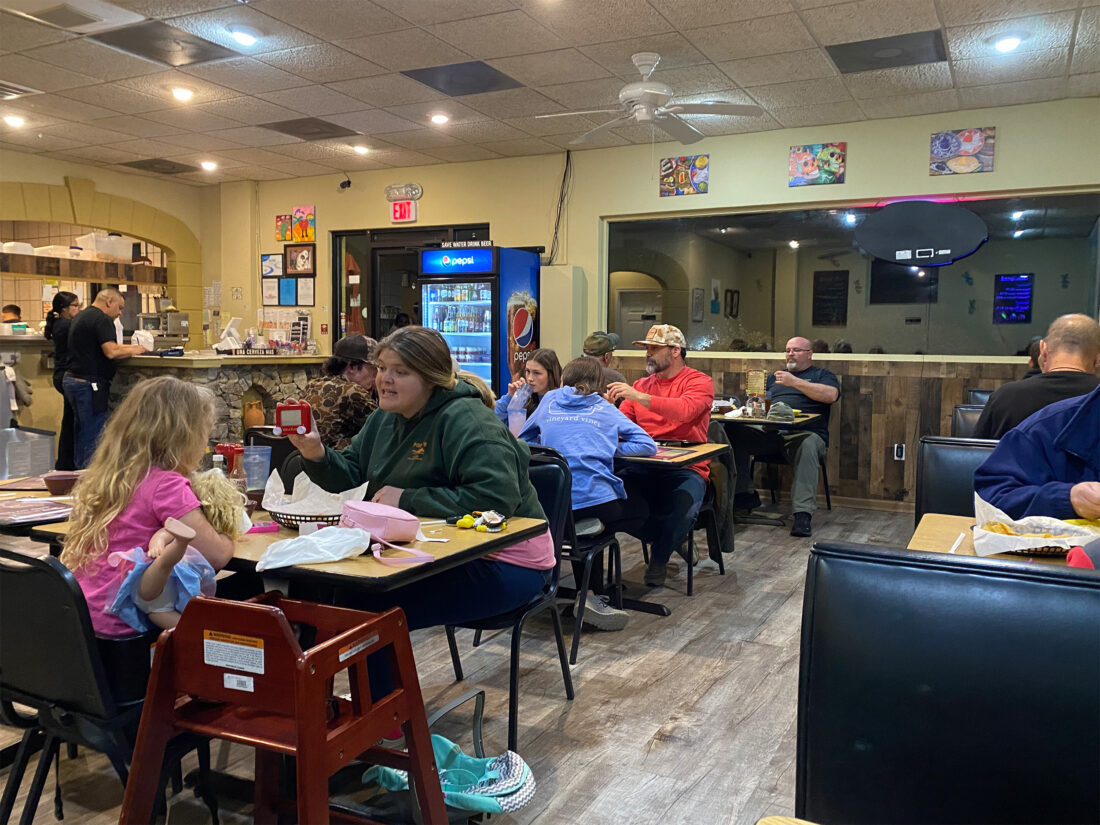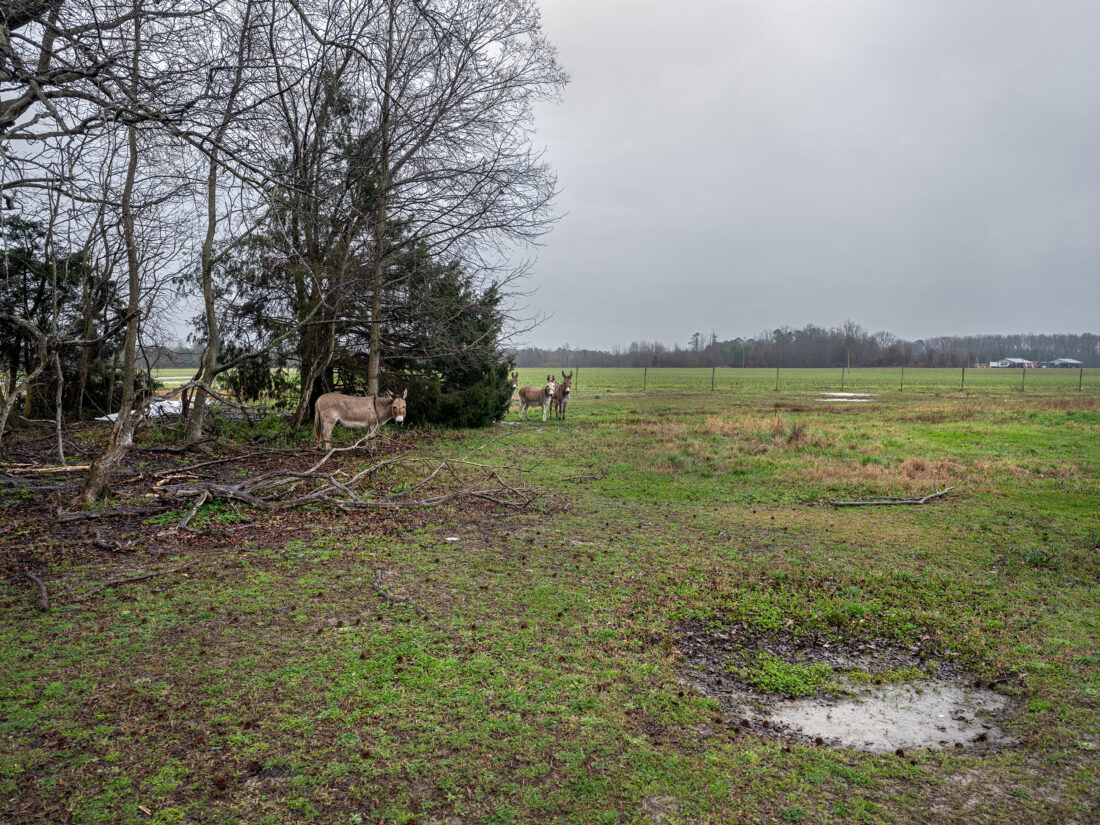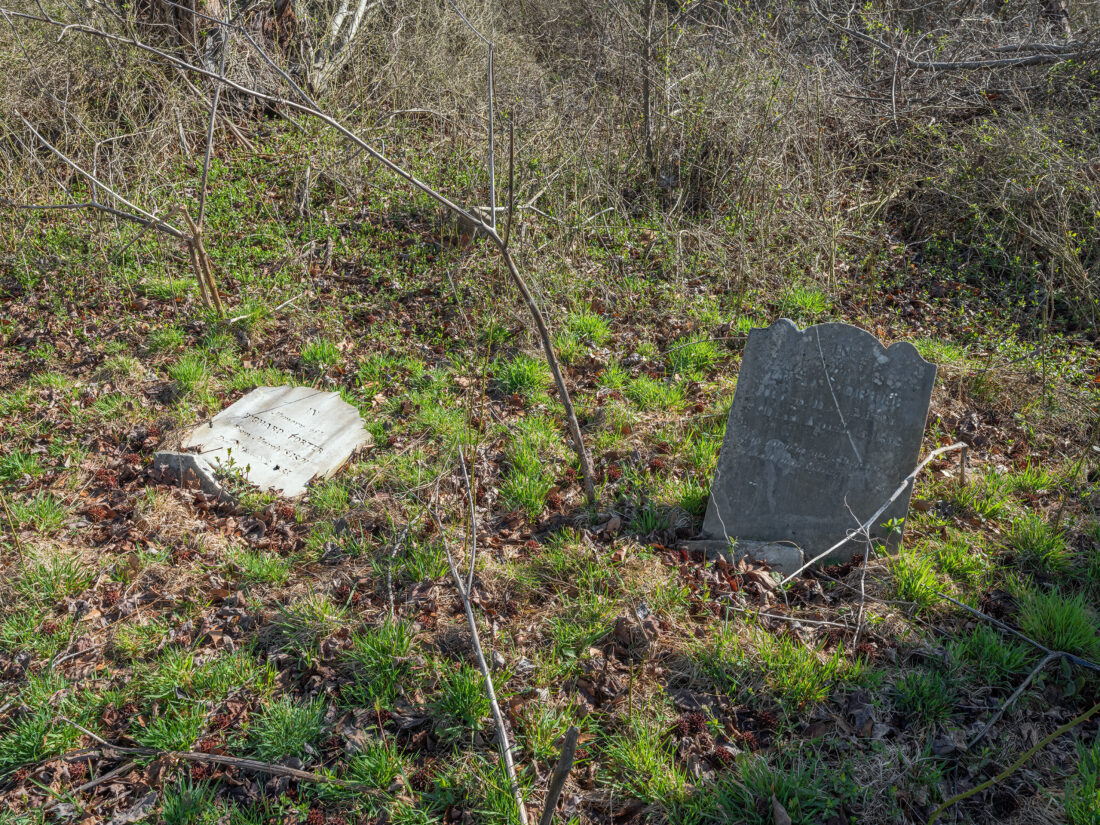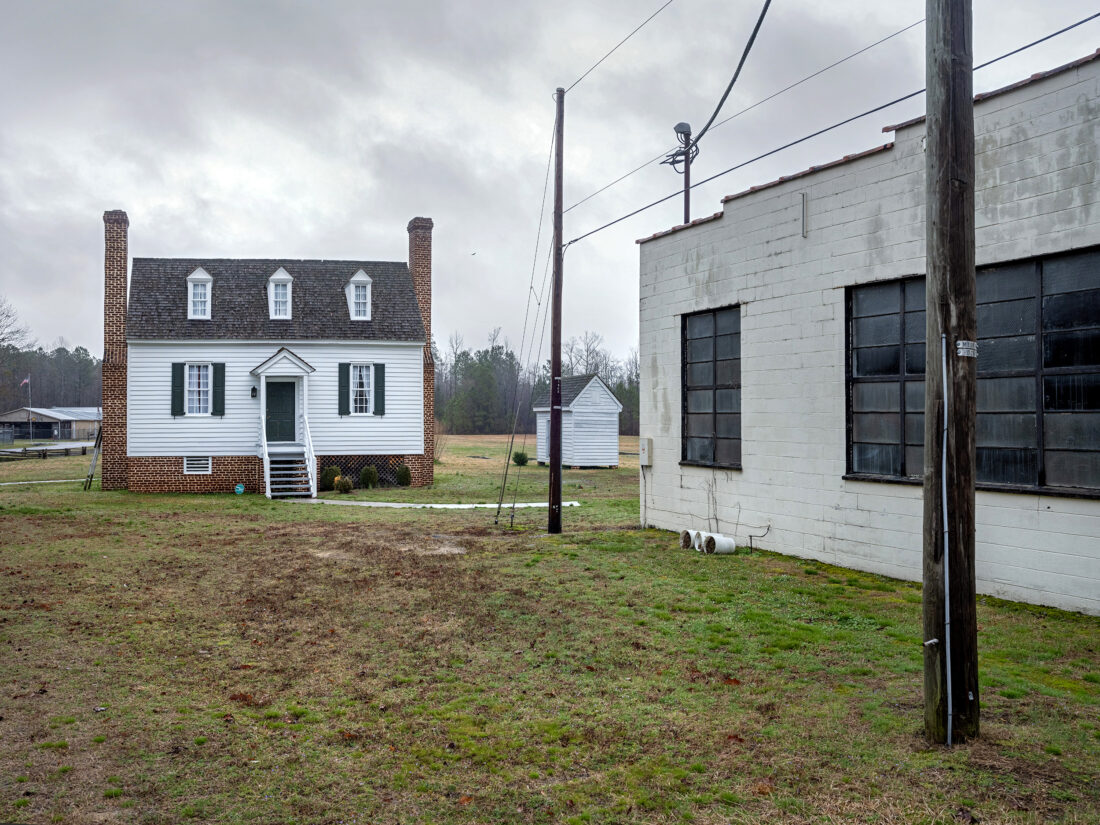An exploratory trip into my heritage. A deep dive into the darkest heart of America. I am on my way to Courtland, Virginia to tour the route of Nat Turner’s slave rebellion of 1831. My hotel just off I-95 is next to a truck stop with fast food and, thankfully, a Starbucks. Down the road that parallels the freeway, the Blue star Highway, I found Los Compradres Mexican. The crowd was Trumpy looking – one man had a sweatshirt emblazoned with “Virginia is for Hunters” – but the vibe was good, the food spectacular, and the Mexican restaurant staff, apparently, on friendly terms with the locals.

Stony Creek, Virginia, 2014 – © Brian Rose
Rick Francis, the county clerk, led the tour that followed the route of Nat Turner’s murderous rampage through the countryside of Southampton County, the biggest slave revolt in American history. We traveled together by bus, a group of both Whites and Blacks, some locals and some who drove in from miles away, like me. Some had family connections to the people of 1831 when the uprising took place, but few were as close as mine. More on that later.

I was thirty-one years of age the 2nd of October last, and born the property of Benj. Turner, of this county. In my childhood a circumstance occurred which made an indelible impression on my mind, and laid the ground work of that enthusiasm, which has terminated so fatally to many, both white and black, and for which I am about to atone at the gallows. It is here necessary to relate this circumstance–trifling as it may seem, it was the commencement of that belief which has grown with time, and even now, sir, in this dungeon, helpless and forsaken as I am, I cannot divest myself of.
A steady soaking rain kept us in the bus most of the day, but I jumped out here and there and made pictures mostly from the road. There aren’t many structures still standing from 1831, but the landscape remains relatively unchanged and relatively undeveloped. This is Cross Keys, at the center of Turner’s meandering path across the countryside. It was not a town – there were none in those days – save for Jerusalem, the county seat about eight miles away.
This is what is left of the Richard Porter house, where a young enslaved girl warned the family of Turner’s approaching band, and they were able to escape into the nearby woods. The chimney is visible at center, while two vultures perch on the branches at the upper right. I came back the next day and photographed the ruin from a different angle. Across the road, behind an abandoned shack, I found the graves of Richard Porter and his wife.

My connection to the story of Nat Turner’s slave rebellion – one of my connections I should say – concerns this small house. Rebecca Vaughan, one of the victims of Turner’s rampage through the Virginia countryside, is my 3rd cousin six times removed. The house once stood abandoned in a field several miles from Courtland, previously called Jerusalem. The current property owner donated the house to the local historical society and it now sits awkwardly behind the Museum of Southampton History. It has been restored to a pristine condition, which seems, somehow, to hit a wrong note.

Confessions of Nat Turner:
Mrs. Vaughan was the next place we visited—and after murdering the family here, I determined on starting for Jerusalem—Our number amounted now to fifty or sixty, all mounted and armed with guns, axes, swords and clubs…
Well then, when it comes to the staff, I’ll just have to guess that, “Some, I assume, are good people.”
If Trump gets re-elected, he’ll deport everyone is this restaurant, and then there won’t be a decent place to eat in a fifty mile radius.